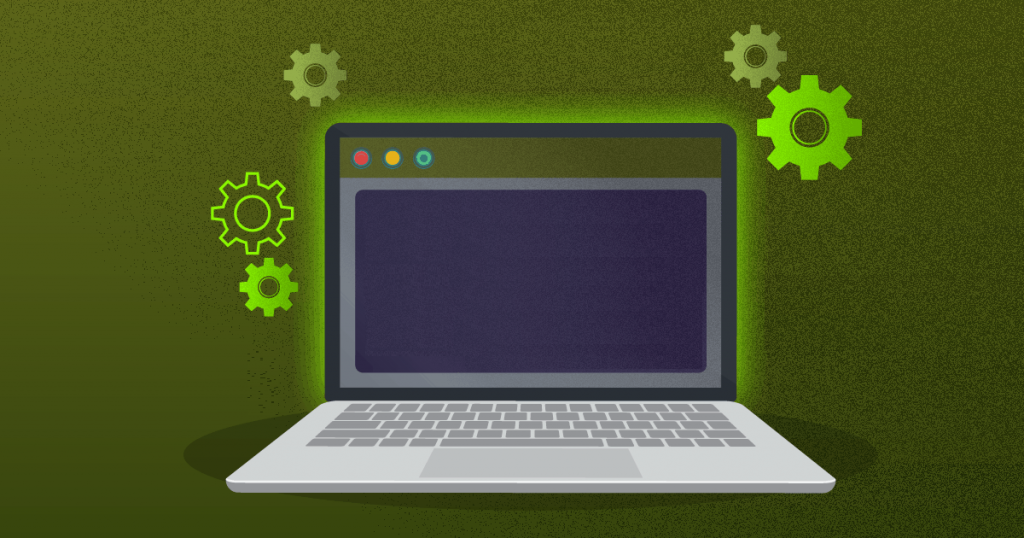To access a website, we usually type its address on a web browser. It’s so common that almost nobody realizes that, by doing this, they are using a translation of the server’s actual electronic address.
And when it comes to this translation process, any change made in the server may affect it, causing troubles to access the website. Then, when this happens, one effective way to correct the issue is by cleaning your DNS log.
To help you with that, we will explain how to flush the DNS cache and why it is so important. In this post, you will see:
- What is DNS?
- Why it is important to flush the DNS cache?
- How to clear the DNS cache in different systems
Keep reading and learn everything you need to know.
Download this post by entering your email below
What is DNS?
DNS stands for Domain Name System. It is a registry for the IP of a website you’ve already visited, making any future connections to the same IP address quicker.
When you access a server, like WordPress, the website’s IP stays registered locally in your device. Next time this machine contacts the same DNS server, the IP memory speeds up browsing.
Why it is important to flush the DNS cache?
If a website’s IP changes, bugs like the famous error 404 might happen when you try to access it.
This could lead to broken links pointing to your site, which is harmful for your SEO. If you currently invest in Content Marketing strategies, you know how this impacts your growth.
DNS cache is a file in which these IPs are stored. When you successfully flush it, you “reboot” the addresses, making it easier to find the new URL’s IP.
How to clear the DNS cache in different operating systems
This procedure varies and takes different amounts of time depending on which system you are using.
See below how to clear the DNS cache in each web browser and operating system.
Chrome
- Open your browser;
- Copy the following address and paste it on the URL bar: chrome://net-internals/#dns;
- Look for the “Clear Host Cache” icon and click on it;
- Reboot your browser to validate the changes.
Android smartphone
- Access the “Settings” menu on your device;
- Look for the “Applications” secondary menu;
- Choose the browser you use;
- Click on “Storage”;
- Click on “Clear Cache”.
iOS smartphone
- Set the device on Airplane mode for 15 seconds;
- Reboot the device.
Windows
In this case, there are two methods. The first one is:
- Open Start Menu, type “CMD” and open the Command Prompt;
- In it, type “ipconfig/flushdns” and press Enter;
- Reboot the PC to validate changes.
You can also take these following steps:
- Open Start Menu, type “CMD”;
- Right-click on the Command Prompt icon;
- Click on “Run as administrator”;
- Type “ipconfig/flushdns” and press Enter;
- Reboot the PC to validate changes.
macOS
This one is a little harder because you need different commands depending on the macOS version you use. But the initial steps are always the same:
- Access the administrator profile;
- Open the “Terminal” application;
- Insert the command line suited to your MacOS version.
Versions and their corresponding commands are the following:
- OS X Yosemite and newer: sudo killall -HUP mDNSResponder;
- OS X Mavericks, Mountain Lion and Lion: sudo killall -HUP mDNSResponder;
- OS X Leopard and older: sudo lookupd -flushcache.
Now that you’ve learned how to clear the DNS cache, you will be able to make your page more accessible. And as you know, having links that are working well is crucial for Digital Marketing.
If you want to have a blog that converts, you need to know to set it up in the right way. Check out our free guide to start your own corporate blog in WordPress!







![What are Clickbait Headlines? [+ Clickbait Examples that Work as Blog Post Titles]](https://rockcontent.com/wp-content/uploads/2021/08/clickbait-examples-300x158.png)
